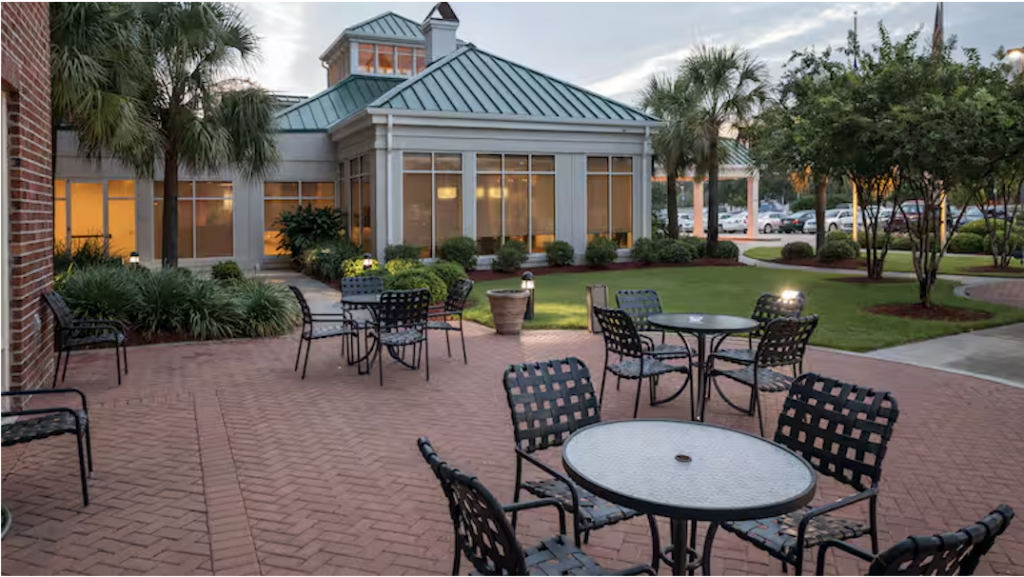A Tour of Literary Acadiana
Come along for a bookish tour of acadiana, where you’ll get a glimpse of Legendary writers who’ve visited the region

In the summer of 1960, John Kennedy Toole lived in a small apartment on the corner of Convent and Lafayette streets in Lafayette. His friend and fellow writer Joel L. Fletcher remembers him describing it in Conradian metaphor as “a cramped heart of darkness with cockroaches and a linoleum floor.” Fletcher also recalls drinking beer in country bars with Toole at places like Mulate’s in Breaux Bridge and talking about Flannery O’Connor and Evelyn Waugh.
Acadiana’s literary history is sprinkled with tales like these, some of them hidden and almost forgotten. Other places like UL Lafayette’s Ernest J. Gaines Center and Cavalier House Books keep the area’s literary heritage alive through author events and special programs. Take a tour of literary Acadiana with us as we turn the page on the authors and locations that inspired some of their most famous works.

Katherine Anne Porter
Twentieth-century novelist Katherine Anne Porter was born in Texas in 1890, but she spent two and a half years of her life in Lafayette. From the summer of 1906 to the fall of 1908, she lived near what is now downtown with her first husband John Henry Koontz. Aged 16-18 during that time, Porter has said the marriage was abusive but that she loved Lafayette. In her biography, Joan Givner writes that Porter sought out native artists and theater troupes that passed through town. She also tried to organize a little school near her home, which was close to F.O. Broussard’s Grocery on Convent Street.

Ship of Fools
Katherine Anne Porter published the book that brought her literary fame in 1962. “Ship of Fools” is about a group of characters sailing from Mexico to Europe aboard a German passenger ship. It was made into a film starring Vivien Leigh in 1965.

Henry Wadsworth Longfellow
The legend of Evangeline was made famous by Henry Wadsworth Longfellow in his 1847 epic poem of the same name. Longfellow first heard the story of Evangeline and her lover Gabriel at a dinner party with this friend and fellow writer Nathaniel Hawthorne. Longfellow spent time researching the expulsion of the Acadians from Nova Scotia and their relocation to Louisiana in what is known as Le Grand Derangement, but he didn’t intend his poem to be an accurate historical account. In his “Evangeline,” the two lovers are separated on their wedding day amid the Acadian’s rush to leave their homeland. When she arrives in Louisiana, Evangeline hears that Gabriel is on the banks of the Teche in the town of “St. Martin.” She tracks him up and down the bayou and the lovers finally reunite briefly in old age before Gabriel dies in her arms. In St. Martinville, visitors can see a statue of Evangeline, the Evangeline Oak tree and Acadian Memorial.

Evangeline: A Tale of Acadie
Henry Wadsworth Longfellow’s first epic poem is set against the backdrop of the deportation of the Acadians and became a huge success.
Center for Louisiana Studies
Now in a new home at the historic J. Arthur Roy House on the corner of University Avenue and Johnston Street, the center also houses UL Press. Books are on sale downstairs and author events are held periodically. The world’s largest collection of Cajun and Creole field recordings, oral histories and other folklife materials are also available to scholars and researchers upon request. The Roy House is open to the public Monday- Thursday.
Mary Alice Fontenot
Best known for her “Clovis Crawfish” series of books, Mary Alice Fontenot was born in Eunice and worked as a journalist before publishing her first book in 1961. There are 18 books in the Clovis Crawfish series, and Fontenot also wrote “Mardi Gras in the Country,” which tells the story of how Mardi Gras is celebrated in rural areas, and co-authored the cookbook “Cajun Accent.” Her final book “Clovis Crawfish and Silvie Sulphur,” was published posthumously in 2004. Fontenot’s papers are housed at Dupré Library in the UL University Archives.

Clovis Crawfish and His Friends
Now in a 60th anniversary edition, the first story in the Clovis Crawfish series emphasizes the importance of friendship amid the beauty and dangers of bayou life.

Ernest J. Gaines
Ernest J. Gaines was born on a plantation near New Roads, but he was a writer in residence at UL Lafayette from 1983-2004. In 2010, UL formally opened the Ernest J. Gaines Center, an international research center on Gaines and his work. Gaines’ original manuscript and papers, all editions and translations of his work and memorabilia gifts from the Gaineses to the University, are housed at the center — located on the third floor of Edith Garland Dupré Library and open Monday-Friday.

A Lesson Before Dying
First published in 1993, Ernest Gaines’ story of a young Black man sentenced to death is set in a small Cajun community in the late 1940s.
Cavalier House Books
Downtown Lafayette’s independent bookstore stocks fiction, nonfiction, local interest books, kids’ titles and gift items. Author signings, story time and book club events are held weekly. To join the book club and find out what they’re reading each month, use the app The StoryGraph. Cavalier House is open Tuesday-Sunday.
James Lee Burke
James Lee Burke once said in an interview: “I dream about New Iberia all the time. My earliest memories are there.” His family has lived on Bayou Teche since 1836, and he spent summers with his grandparents at their home at 715 E. Main St. He expertly blends the past with the present in his Dave Robicheaux series of novels, which now total 24. Burke lives in Montana, but scenes from his books are scattered throughout New Iberia, and downtown store Books Along the Teche carries signed copies of his novels. A literary festival by the same name was inspired by Burke and takes place each year in early April, and a statue of him was erected in Bouligny Plaza in 2024.

Clete
The latest book in James Lee Burke’s “Dave Robicheaux” series brings Dave’s partner and friend Clete Purcel to the forefront for the first time as the pair attempt to stop ruthless smugglers of a dangerous new drug.

Morris Raphael
The late journalist and writer was a resident of New Iberia from 1964 until his death in 2011. He wrote and published 14 books, wrote a Sunday column for The Daily Iberian, stories for Acadiana Lifestyle and served as editor of the Franklin Banner-Tribune. He has been called “one of the finest historical writers to come out of Louisiana,” and his books have titles like “The Battle in the Bayou Country” and “Murder on the Teche Queen.” Several of the jacket covers feature artwork by George Rodrigue, who was a personal friend. His daughter now distributes his books to Books Along the Teche and Shadows-on-the-Teche in New Iberia, and his papers, including his research on local history, can be found at Dupré Library on the UL campus.

The Loup-Garou of Côte Gelée
Published in 1990, “The Loup-Garou of Côte Gelée” reveals the life of a struggling Cajun family and a boy who has experiences with a loup garou or werewolf. The book includes drawings inside and a cover by George Rodrigue.

John Kennedy Toole
In the summer of 1959, having recently graduated from Columbia University, 20-year-old John Kennedy Toole crossed the Atchafalaya Basin into Cajun Country to teach freshmen-level writing courses at what is now UL Lafayette. He lived in a ground-floor apartment on Convent Street and called his university colleagues “a faculty composed of fiends and madmen.” Toole wouldn’t start writing his famous novel “A Confederacy of Dunces” until four years later, but two characters he met during his time in Lafayette are said to be possible models for Ignatius J. Reilly. Other local ties to Toole include late university professor of English Dr. Patricia Rickels, who is quoted in the book “Butterfly in the Typewriter” as saying Toole was in his “season of glory” in Lafayette. He only stayed for one year, but the impression he made on the town and impression its people made on him lasted much longer. UL Lafayette’s acquisition of Toole’s papers and memorabilia at auction only helps to cement his connection to Lafayette. The apartment he lived in is now located behind the historic Denbo-Montgomery House off Girard Park Drive, and his former office was where Griffin Hall now stands on campus.

A Confederacy of Dunces
Winner of the Pulitzer Prize for Fiction, John Kennedy Toole’s now cult classic follows main character Ignatius J. Reilly on a hilarious spree through the streets of New Orleans.




